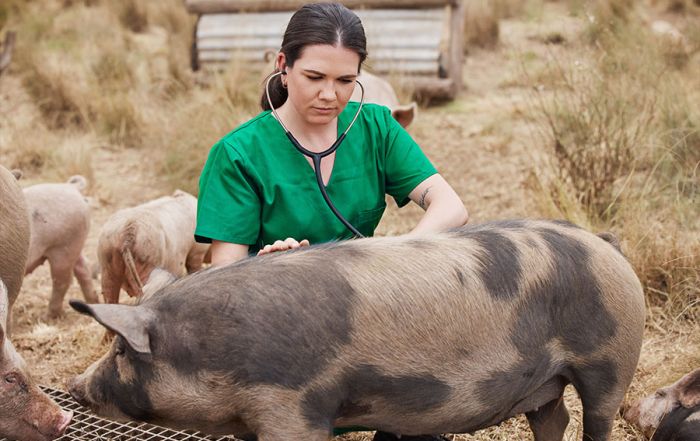Vendor Relationship Best Practices during COVID19
There has been a lot of attention to restaurant reopenings this summer. At FoodHandler, we have covered this topic with a webinar, development of a checklist, and creation of signage for posting in foodservices, in addition to discussing this topic in previous blogs. General best practice is to keep the coronavirus from entering the foodservice.
A focus on keeping the virus from entering the foodservice means effectively communicating best practices with internal (staff) and external stakeholders (clientele and vendors). We have covered in previous blogs actions to mitigate risk within the operation. In the blogs for this month, we discuss control steps to consider in your relationship with vendors to ensure safe food and a safe work environment. Vendors are a necessary part of your operation and a critical link in your supply chain. Their goals and yours are compatible in that the foodservice having the supplies it needs to provide for customers is very important. Like other aspects of operations, to ensure delivery of safe foods occurs, the devil is in the details or the “how-to’s”.
An operation should have written standard operating procedures that guide the procurement and transfer of food and supplies, also known as steps of purchasing and receiving in the flow of food. These steps are critical because this is when managers and employees can stop the entry of any unsafe product, and in times of COVID, also stop the entry of the virus into the foodservice.
What are the key elements of these SOPs? Like any SOP, they should contain best practices and answer the why, who, when, and how questions. Most SOPs include the basics related to health and hygiene practices, temperature controls, and cleaning and sanitizing.
Best practices for purchasing and receiving are not complicated, but they do require some homework with selection of a reputable supplier. This may be done by others in the organization, particularly if your operation is one with multiple units. Typical selection criteria relate to availability of products that fall within budget and meet delivery requirements, in addition to other considerations shown on list below. Selection criteria generally focus on the 3 P’s: product, price, and place (delivery aspects).
Criteria to Consider in Selection of Vendors
- Food safety plans
- Traceability plans/recall notifications
- Employee health protocols
- Variety/quantity of products
- Lead time order and delivery
- Samples/promotions
- Site visits/third party audits
- Return policy
- Size of operation
- Back order history
- Substitution capability
- Contracting options
- Quantity/volume discounts
- Delivery schedule
- Background checks staff
- Minimum orders
- Pricing strategies
- Purchasing flexibility
- Technology capabilities
- Credit terms/payment
- Value added services
- Socially responsible
- Sustainability practices
- Liability protection
- Product assurances
A key best practice is to purchase from reputable, approved suppliers. This means the vendor meets all applicable local, state, and/or federal laws, and has met inspection standards by the appropriate regulatory agency. After you narrow selection of potential vendors to those who meet criteria for your operation (related to product, price, and delivery requirements), ask about traceability and food safety programs. Make time to take a visit their warehouse to observe their operation in action and ascertain if they are doing what they say they are doing. Contact others within your networks, review inspection reports, or solicit third-party reports. If your operation purchases directly from local producers, review the archived SafeBites Webinar from May of this year by Dr. Angela Shaw for some specific tips about local purchasing and selection criteria.
Communicate clearly with vendors about product needs. Written specifications may be required for certain types of onsite foodservices. Making it clear the specifics of the product (such as pack size, desired brand or quality, or temperature requirements) avoids confusion and delays.
After purchase decisions are made, the next step involves receiving of products. It is best if product is delivered when staff is present to inspect and confirm that what is delivered is what was ordered, and that the correct quality and quantity of foods are received. Think of this step as “trust, but verify”. With COVID concerns, delivery personnel should wear a mask, unload product, step back to allow physical distancing while inspected by foodservice staff member, and leave the form for signature approval using a personal pen (or touch screen) with hand sanitizer close by. Making sure products are safe at delivery, and that risks from transmission of any pathogens are mitigated, is the goal.
If a drop delivery is being considered as a way to minimize person-to-person contact, recognize that proper vetting of the vendor should occur before the supplier (and the agent) is given after-hour access to the operation. You are literally giving them the keys to the store! If deliveries do occur after hours, staff should inspect items immediately when they report to work. Our opinion is that while this approach does have benefits, the loss of control is a major concern, particularly in today’s world of intentional food contamination, potential for theft, and possibility of error (wrong amounts, product, temperatures, etc.). I guess you could say we have control issues! But here is one example of why maintaining control makes sense. In Cathy’s home school district, milk delivery usually occurred in the early morning hours with the dairy vendor’s truck driver having a key to all the school buildings. Guess what? The delivery agent lost the keys to not only this district’s buildings, but other districts in the area as well! As you can imagine, that caused some headaches! Another point to keep in mind regarding drop deliveries is that health inspectors may require a temperature log be maintained by both delivery personnel and the foodservice staff of TCS foods.
In our second blog for the month of August, we will offer some resources for developing an SOP, checklists to use when making vendor decisions, and trustworthy sources of information to help you in having a meaningful conversation with vendors. Foodservice managers and vendors have compatible goals in providing safe food and supplies in a way to reduce risk. Risk Nothing!
Never Did I Ever…
Yes, I know the real game is “never have I ever”, but that phrase didn’t work [...]
Understanding Food Contamination in Foodservice Operations
Within this blog, I’ve provided a lot of details about the finer points of food safety [...]
The Antibiotic Debate in Our Food Chain
The discovery of antibiotics in medical science is regarded as one of the most important medical [...]
Exposing the Risks of Raw Milk
When I began my career in the food safety area several years ago, I never dreamed [...]









